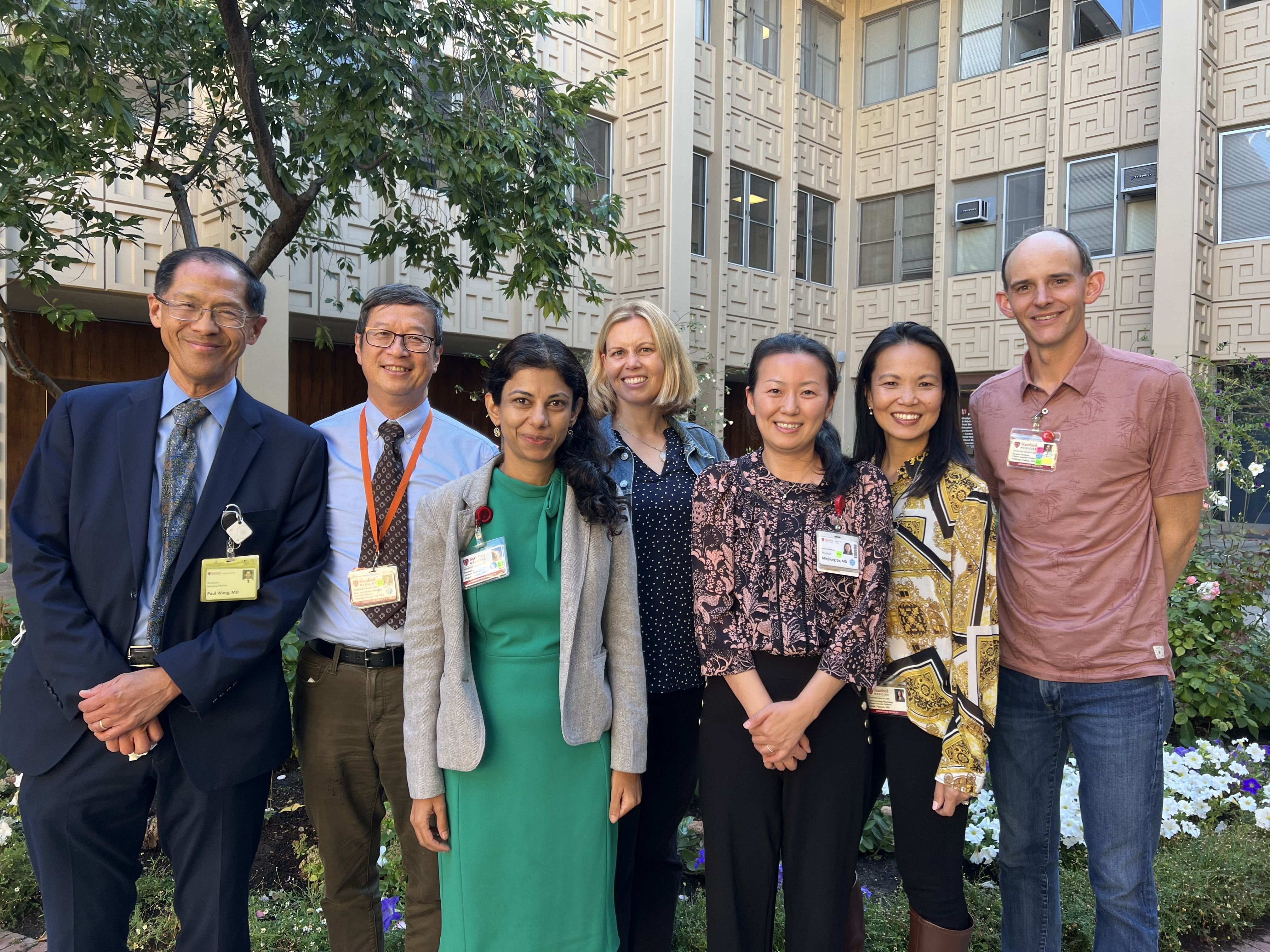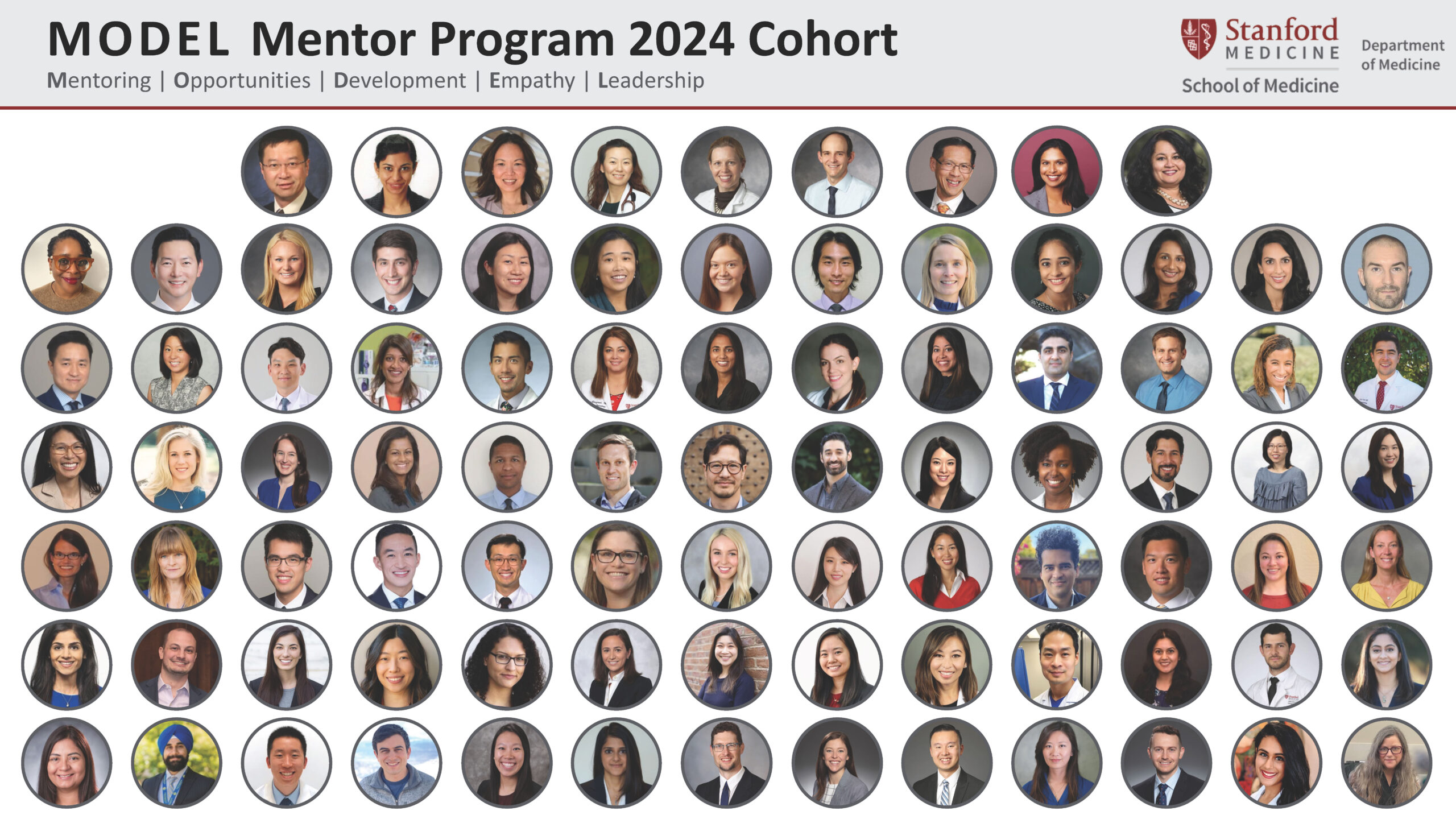
Mentorship Reimagined: The MODEL Program’s Impact on Faculty Development at Stanford
#Communities
With an inaugural cohort of seven faculty mentors and 87 mentees, the MODEL program has already had significant impacts on faculty across department divisions and organizations.
“One of the best things that has happened to me as a result of the MODEL program is to make connections with other early-career women faculty,” says Clinical Assistant Professor of Cardiovascular Medicine and MODEL mentee Jennifer Woo, MD. “I was waiting to give my talk at a major international scientific meeting. I could not feel my fingers, I was so nervous.”
Woo texted two fellow MODEL mentees, who talked her through her nerves. They told her to write down the names of several people and imagine she was giving the talk to them. “It worked!” Woo says. “I won the Young Investigator Award!”
MODEL program leaders, alongside the inaugural cohort of participating faculty mentors and mentees, have been hard at work since the program launched in January 2024. MODEL, shorthand for Mentorship | Opportunity | Development | Empathy | Leadership, champions a dynamic new mentoring culture across the Department of Medicine.
With an inaugural cohort of seven faculty mentors, called MODEL leads, and 87 mentees, the program has already had significant impacts on faculty across department divisions and organizations.
“The MODEL program helps relieve the burden of finding (and providing) mentorship, because it broadens the definition of mentorship beyond the classic one-to-one ‘advisor-advisee’ relationship most of us think of,” says the department’s senior vice chair for clinical affairs, Ann Weinacker, MD. MODEL, she says, “allows experienced faculty to share their knowledge and experience with groups of early-career faculty in a casual and relaxed atmosphere that promotes open dialogue.”
The group format also provides opportunities for networking with colleagues and other more senior faculty and for developing relationships that are mutually beneficial, including classic mentoring and sponsorship relationships that, according to Weinacker, often seem elusive.
“There’s something magical about regular group meetings, and MODEL is proof. To me, the mutual support, the sense of community, and connection is as precious as the mentorship. Why else would its members carve out time they don’t have to be there?”
– Abraham Verghese, MD
Trained, Dedicated Mentors
The MODEL leads’ commitment to this initiative is as impressive as it is inspiring. In addition to the myriad personal and professional demands on clinical faculty, MODEL leads undergo three months of formal training with the Teaching and Mentoring Academy in the School of Medicine. The curriculum covers, among other topics, mentorship principles, communication strategies, and teaching methodologies. Leads also engage in continuing learning from the medical school’s Office of Academic Affairs, as well as the department’s Diversity, Equity, and Inclusion Council; Team Science initiatives; and Making SPACE program.
MODEL leads serve their term as dedicated faculty to help facilitate promotion and advancement of their colleagues, train others to develop strong mentoring relationships, and provide ongoing workshops to promote networking and mentorship.
Behind the leads’ dedication to the program’s mission is a sense of the importance of establishing mentorship as a core cultural value in the department and converting that shared belief into regular practice across divisions.
“Mentorship has traditionally been an expectation in academic departments, rather than an intentional investment and strategy to support the success, well-being, and belonging of our early-career faculty,” says Niraj Sehgal, MD, clinical professor of hospital medicine and senior associate dean for clinical affairs in the School of Medicine. “MODEL is such an exemplary program to achieve those goals.”
Connecting Mentees and Mentors Across Divisions and Career Stages
To achieve that common objective, MODEL mentors and mentees initiate and engage in small and large group discussions celebrating mentorship as beneficial for faculty members at all stages of their careers.
For example, “For clinician educators (CEs), the majority of our interactions with colleagues in the department are to discuss mutual patients,” says MODEL mentee and Clinical Associate Professor of Endocrinology Marilyn Tan, MD. “But MODEL provides a chance to have exchanges with colleagues across divisions, with a focus on career and work-life balance.”
“There’s something magical about regular group meetings, and MODEL is proof,” concurs Vice Chair for the Theory and Practice of Medicine Abraham Verghese, MD. “To me, the mutual support, the sense of community, and connection is as precious as the mentorship. Why else would its members carve out time they don’t have to be there?”
Mentorship Matters
With the first year of operation complete and planning for the next year underway, the MODEL program is very much in the hearts and minds of department participants and leaders, and many are invested in its continuing success.
“MODEL reminds us of why we’re grateful to be at Stanford and in an environment where we’re continually finding ways to invest in ourselves and each other,” Sehgal reflects.
Former program leader Upinder Singh, MD, shares, “We should call the story ‘a labor of love,’ since that really is what we are talking about.” Her program co-leads, Kavitha Ramchandran, MD, and Rebecca Geraldi, readily agree.

